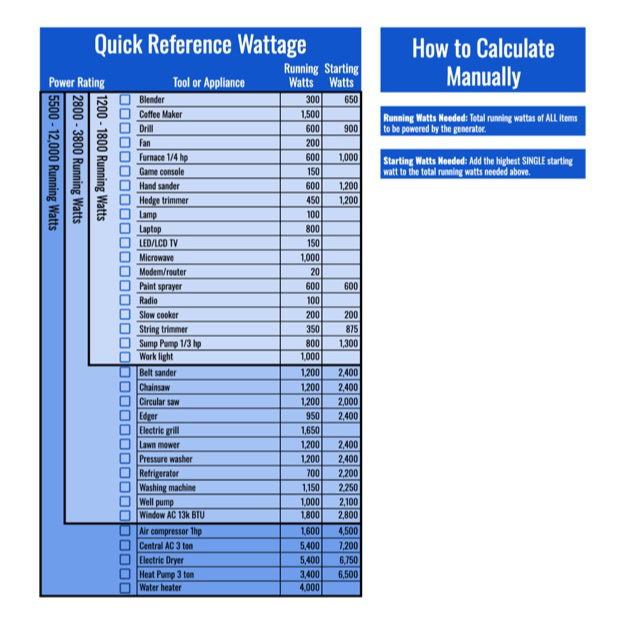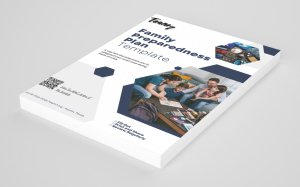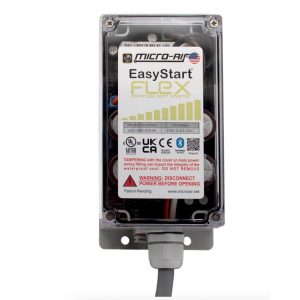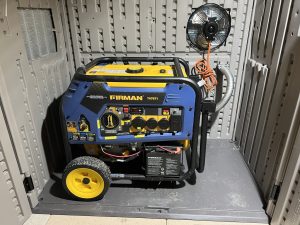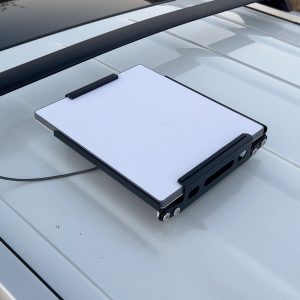When it comes to emergency preparedness, one of the most critical considerations is ensuring access to reliable power. Whether you’re navigating a prolonged power outage, managing essential appliances during a natural disaster, or planning for a backup generator, understanding your power needs is essential. That’s where the Quick Reference Wattage Guide comes in— a free comprehensive tool designed to help you calculate your wattage requirements with ease.
Why Is Knowing Your Wattage Needs Important?
Selecting the right generator or power solution hinges on knowing how much power your household or business appliances consume. Without accurate wattage calculations, you risk:
- Overloading your generator, leading to potential damage or failure.
- Undersizing your power source, leaving critical appliances unpowered.
The Quick Reference Wattage Guide simplifies this process by providing a clear, detailed breakdown of running and starting wattages for common tools and appliances.
What’s Inside the Guide?
Here’s a sneak peek at what you’ll find:
1. Appliance Wattage Listings
The guide includes a comprehensive table of tools and appliances along with their:
- Running Watts: The continuous power required to keep the appliance operating.
- Starting Watts: The additional power needed to start appliances with electric motors (like refrigerators or drills).
For example:
- Blender: 300 running watts, 650 starting watts.
- Coffee Maker: 1,500 running watts, no starting wattage needed.
- Drill: 600 running watts, 900 starting watts.
2. Categories of Power Solutions
The guide helps you compare different types of power sources, including fuel-powered generators and battery power stations, to meet your specific needs.
3. Instructions for Manual Wattage Calculations
If you want to customize your calculations, the guide walks you through the process:
- Running Watts Needed: Total the running watts for all appliances you plan to use simultaneously.
- Starting Watts Needed: Add the highest single starting wattage to your total running watts.
4. Pro Tips for Emergency Preparedness
The guide also provides insights into:
- Safely connecting appliances using extension cords.
- Avoiding overloading circuits.
- Maintaining your generator for long-term reliability.
How to Use the Quick Reference Wattage Guide
- Check Off Your Appliances: Identify the appliances you’ll need during a power outage.
- Sum Up Your Wattages: Use the guide’s quick reference table to calculate total running and starting watts.
- Select the Right Generator: Choose a generator that comfortably supports your calculated wattage needs.
Don’t wait until the next emergency to get prepared. Download the free Quick Reference Wattage Guide today and take the first step toward power resilience.
This simple yet powerful tool will ensure that you’re ready to face any power outage with confidence. Whether you’re preparing your home, planning for disaster response, or simply exploring emergency power options, this guide is your ultimate resource for success.
For the The Ultimate Emergency Generator Guide, click here.

